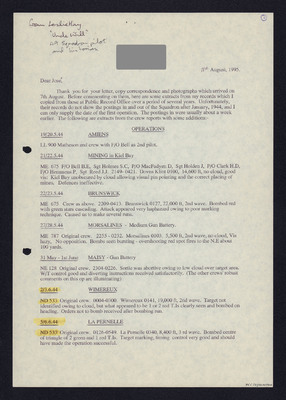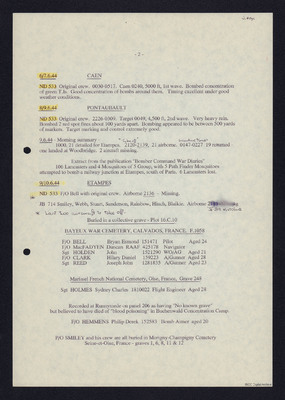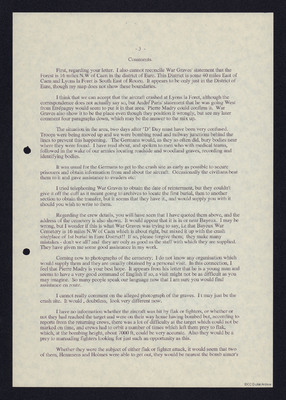Letter to Jose from Leslie Hay
Title
Letter to Jose from Leslie Hay
Description
The letter lists 49 Squadron operations from May 1944 to 10 June 1944 when John Holden died.
Creator
Date
1995-08-11
Spatial Coverage
Language
Format
Four printed sheets
Conforms To
Publisher
Rights
This content is available under a CC BY-NC 4.0 International license (Creative Commons Attribution-NonCommercial 4.0). It has been published ‘as is’ and may contain inaccuracies or culturally inappropriate references that do not necessarily reflect the official policy or position of the University of Lincoln or the International Bomber Command Centre. For more information, visit https://creativecommons.org/licenses/by-nc/4.0/ and https://ibccdigitalarchive.lincoln.ac.uk/omeka/legal.
Identifier
EHayLWhitehouseJ950811-0001, EHayLWhitehouseJ950811-0002, EHayLWhitehouseJ950811-0003, EHayLWhitehouseJ950811-0004
Collection
Citation
Leslie Hay, “Letter to Jose from Leslie Hay,” IBCC Digital Archive, accessed July 27, 2024, https://ibccdigitalarchive.lincoln.ac.uk/omeka/collections/document/41104.
Item Relations
This item has no relations.




